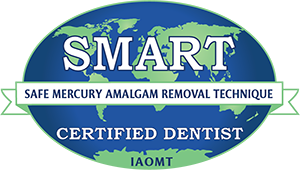How an Oral Cancer Screening Could Save Your Life
October 18, 2017
 Oral cancer — it’s probably not something you think about too often. But your dentist in Southlake suggests oral cancer might take up more of your headspace if you knew that it killed one American every hour. It’s causing more fatalities than ever before — and increasingly, oral cancer is affecting younger, healthier patients. So no matter your age, if you’re an adult, you need to be getting regular oral cancer screenings. Doing so could save your life.
Oral cancer — it’s probably not something you think about too often. But your dentist in Southlake suggests oral cancer might take up more of your headspace if you knew that it killed one American every hour. It’s causing more fatalities than ever before — and increasingly, oral cancer is affecting younger, healthier patients. So no matter your age, if you’re an adult, you need to be getting regular oral cancer screenings. Doing so could save your life.
About Oral Cancer
The early warning signs of oral cancer may long escape notice, resulting in late diagnosis when the cancer has already reached more advanced stages. But according to the Oral Cancer Foundation, early detection of the disease can dramatically increase the 5-year prognosis following an oral cancer diagnosis.
Oral cancer has long been associated with tobacco use and heavy alcohol consumption. While these remain significant factors, the spike in rates of oral cancer can be linked to the spread of the human papillomavirus. Young, healthy men are now especially at a higher risk of developing the disease.
Here’s a full list of risk factors for oral cancer.
- Tobacco use of any kind
- Heavy alcohol consumption, especially combined with tobacco
- Older age (though the median age is lowering each year)
- Family history of cancer
- Prolonged UV exposure
- Loose or ill-fitting dentures that rub sore spots in the oral tissue
Adult patients of all ages should receive regular oral cancer screenings, but the need is especially significant for people who have one or more of the risk factors of oral cancer.
What Happens In an Oral Cancer Screening
An oral cancer screening is a visual and tactile examination in which your dentist will look out for irregularities that could indicate oral cancer.
To begin, you’ll have an in-depth conversation about your oral and overall health. Have you noticed anything unusual lately? Don’t hold back in this discussion with your healthcare provider — you are the expert on your own health, after all.
The exam continues with your dentist or doctor looking closely at your mouth, face, and neck while also feeling around for lumps or bumps.
Some of the most common indicators of oral cancer include:
- Lesions or sores that do not go away after two weeks
- Lumps or bumps in the mouth, cheeks, face, or neck
- Rough or discolored patches in the mouth
- Asymmetries in the face or soft oral tissues
If your doctor detects anything suspicious during the exam, advice will be provided on what to do next. You may need a biopsy quickly, or you may be advised to return to the office after a week or two to see if the area has changed or gone away.
Receiving an oral cancer screening every year is one key to making sure you get successful treatment if the disease does develop — so don’t put off these regular exams!
About the Author
Dr. Preetha Thomas is a leading provider of holistic dentistry for families in and around Southlake, TX. She knows the mouth is intricately linked to overall wellbeing, and provides whole health-focused dental care to help patients of all ages enjoy better health and wellness for life. To learn more about Dr. Thomas, holistic dentistry, or to schedule an appointment with the “dentist near me,” you’re looking for, contact Enclave Dental at (817) 912-1218.
No Comments
No comments yet.
RSS feed for comments on this post.
Sorry, the comment form is closed at this time.




